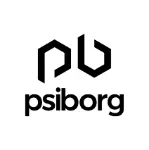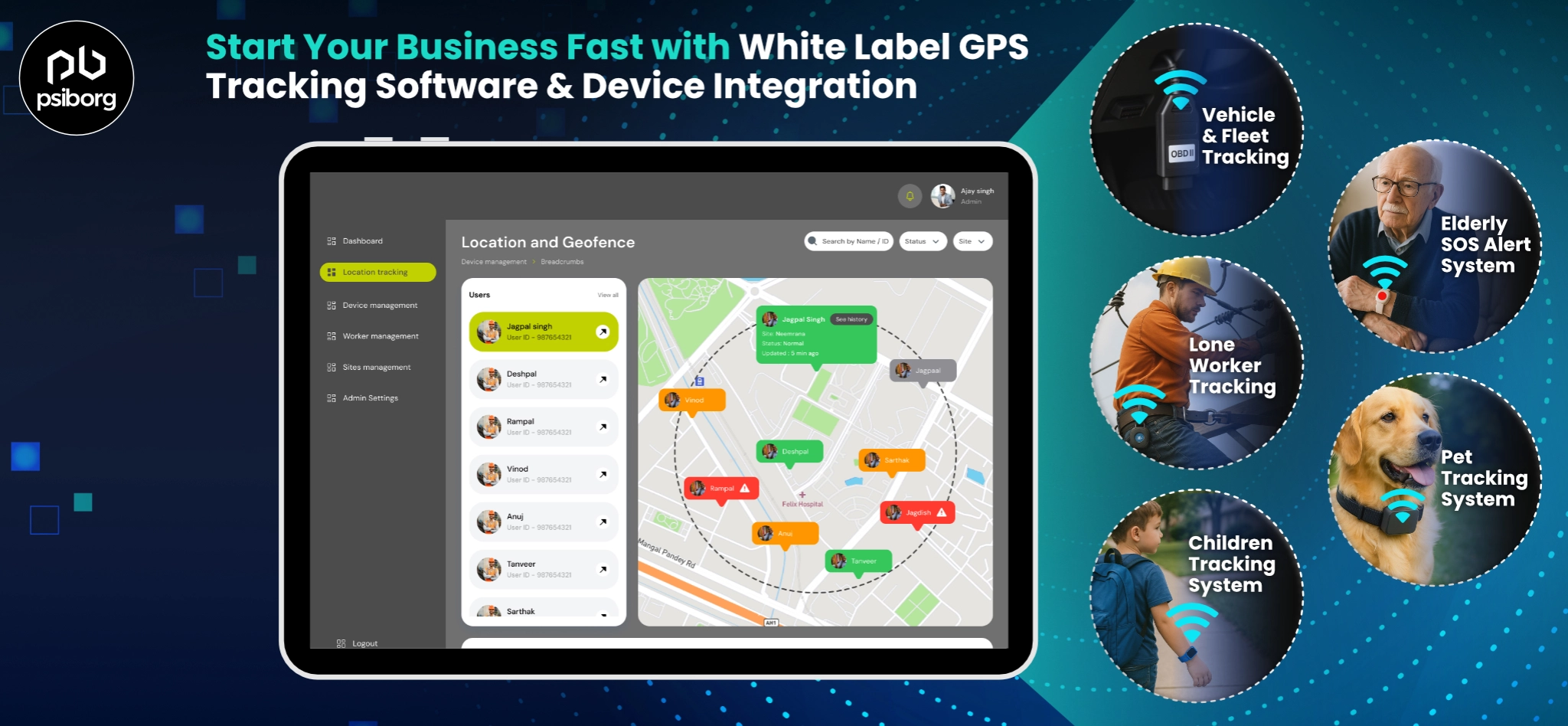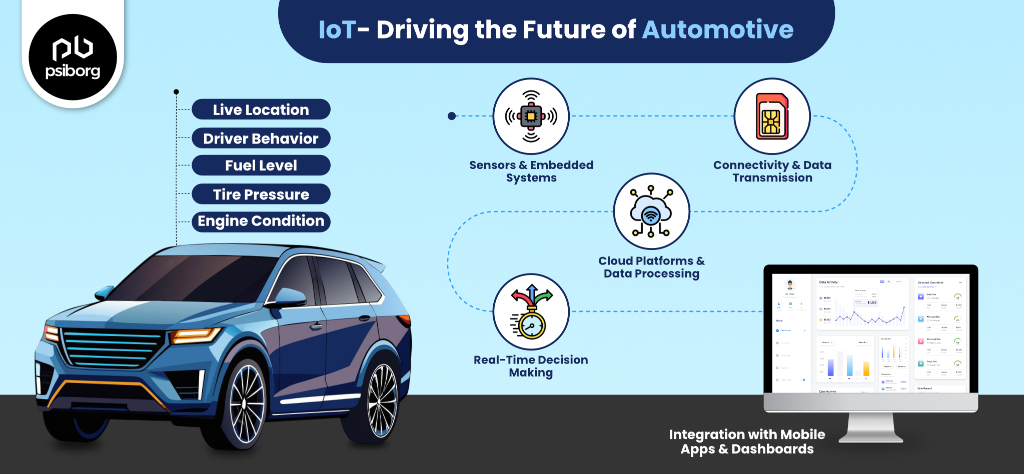We know that large facilities like factories consume a huge amount of electricity, but the question is, where does most of the electricity go or how much energy a single machine could be consuming in a day? While both businesses and households are using electricity every day, they don’t really have the proper understanding of how it is used. The consumption jumps to over-consumption without anyone realizing and this calls for energy management. Thanks to the energy consumption monitoring using IoT (Internet of Things), it has become quite doable.
This technology supports brilliantly in tracking, managing and reducing energy usage. Businesses can now easily gain real-time insights, control their consumption and eventually bring down the energy costs. While they save money, they are also able to make smarter and sustainable decisions that help in efficient working.
What is IoT-Based Energy Monitoring?
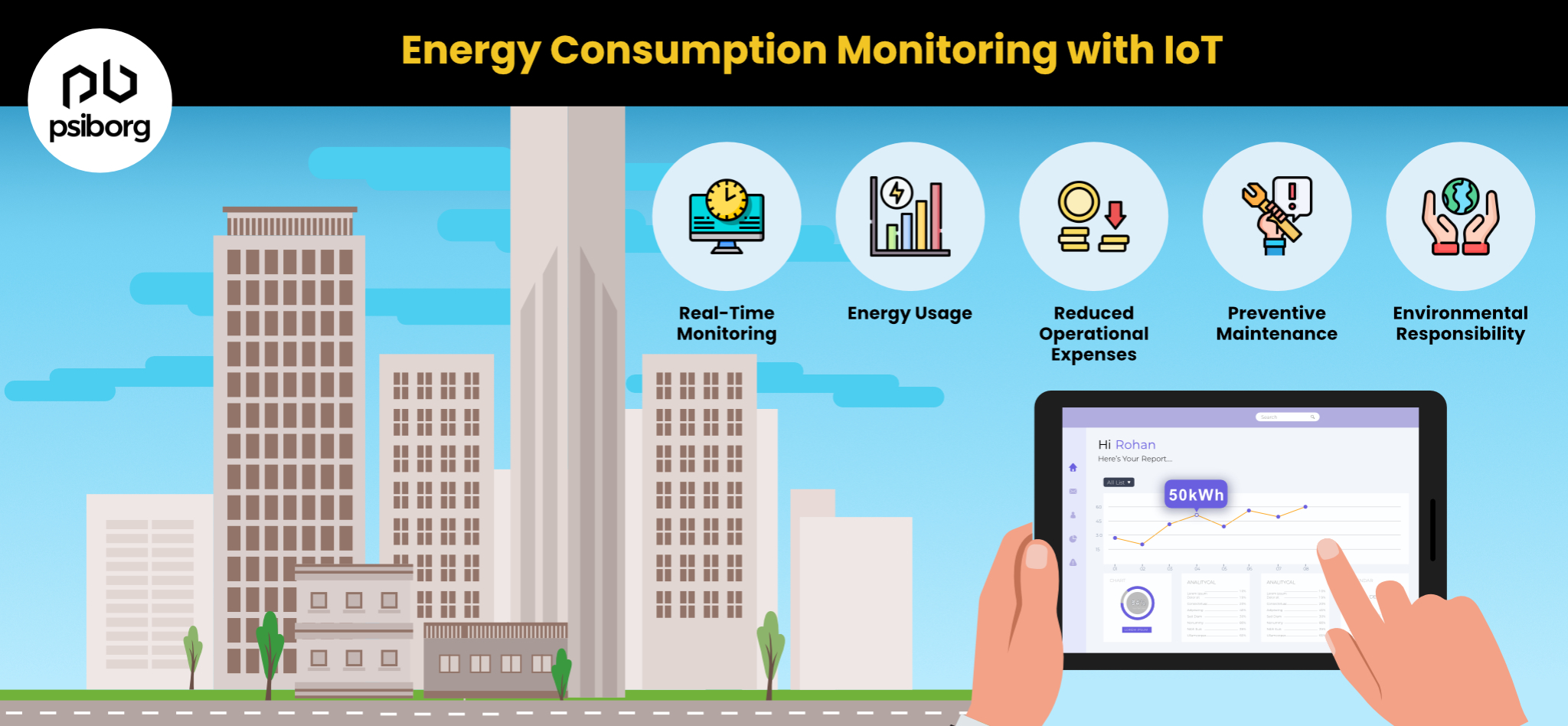
Monitoring energy through IoT is done with the help of a bunch of connected devices. It involves smart meters, sensors and cloud platforms to track and analyze overall energy consumption in real time. These devices work to collect data from different electrical systems and appliances, send it over the internet and present it on the apps/dashboard in a very user-friendly format that’s simple to understand.
It could be a small office, a residential building or a full-fledged manufacturing plant, an IoT energy monitoring system makes it possible to know how, when and where electricity is being used. This is how businesses can know inefficiencies, learn if there are any unusual patterns and come up with energy-saving strategies.
Advantages of Using IoT Energy Management
Shifting from traditional energy tracking to an advanced IoT-based energy management system will bring several amazing advantages:
1. Real-Time Monitoring
Conventional methods like manual tracking are mostly about looking at the monthly bills or static readings but IoT systems provide live data so that proactive adjustments can be made.
2. Details of Energy Usage
An advanced electricity consumption monitor is not just limited to telling the total electricity used but also gives you a detailed report on the consumption by a certain device, specific area or a given process to make optimization possible.
3. Reduced Operational Expenses
By identifying energy wastage or figuring out inefficient devices, businesses can actually slash down their electricity bills by a big margin. It’s like energy audits are not a one-time thing but an ongoing task.
4. Preventive Maintenance
With continuous data collection, systems can notice if there’s irregular power consumption and also learn about malfunctioning equipment. Through early detection, facilities are able to minimize downtime as well as maintenance costs.
5. Environmental Responsibility
A business that lowers its energy waste helps reduce carbon footprints and comes across as environmentally responsible. Especially by adopting smart energy management systems, companies can position themselves as forward-thinking.
Key Components of an IoT Energy Monitoring System
An effective energy consumption monitoring system is a collection of hardware, software and cloud infrastructure that work together to give great results. The main components are:
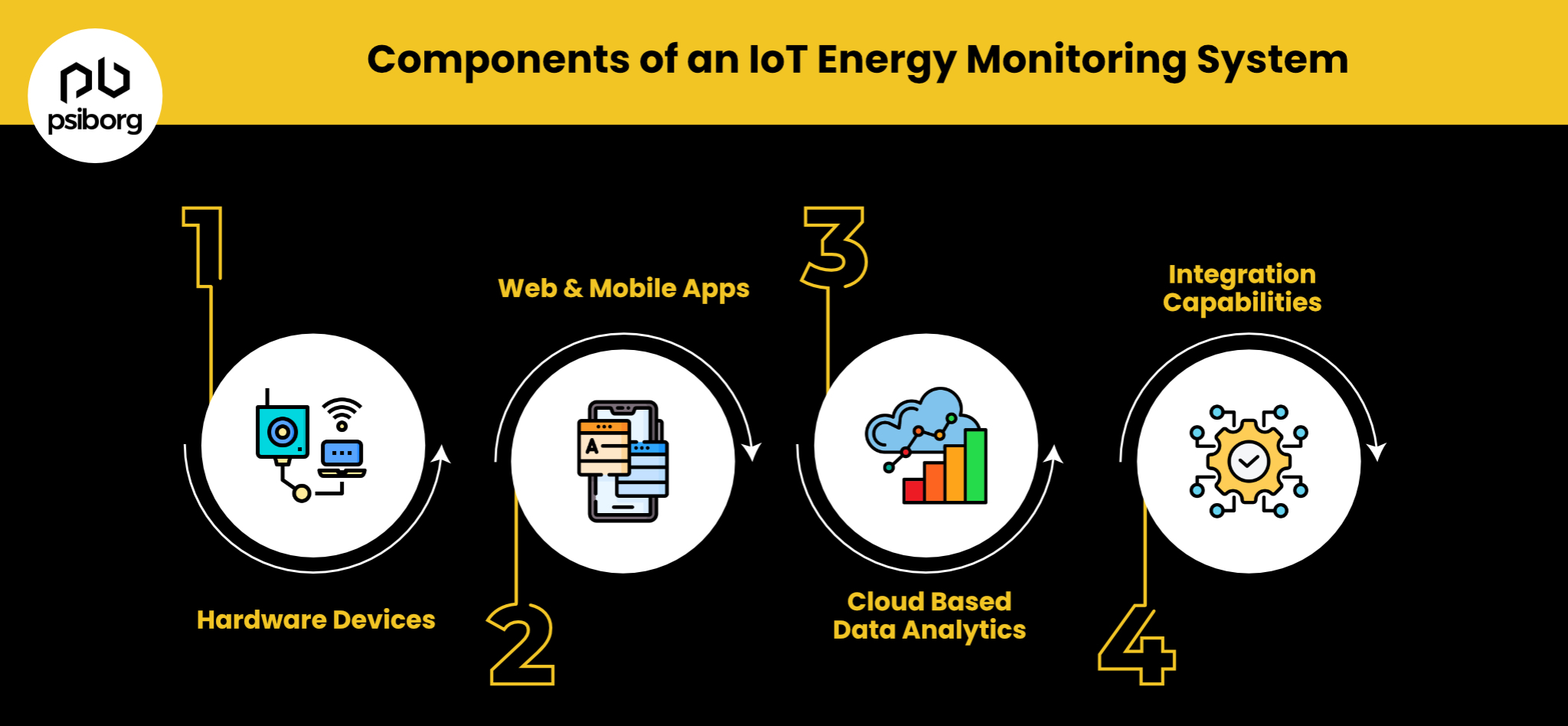
1. Hardware Devices
These are typically Modbus enabled energy meters, MCU with internet Connectivity IoT devices and different sensors that are installed on electrical circuits. They work like front-line data collectors and can track multiple parameters like voltage, current etc.
2. Web and Mobile Apps
The user interface to understand IoT devices data, is of extreme importance. Whether the user accesses via a mobile app or a desktop, these Dashboards present the required data in easily understandable charts and graphs, compare usage patterns and even generate reports
3. Cloud-Based Data Analytics
This is where the major work is done. So, the collected data is processed in the cloud. Here, the analytics engines determine possible trends, detect irregularities and tell what action can be taken
4. Integration Capabilities
IoT-based systems are designed to be flexible. They can be integrated with the existing automation systems, billing software and other tools making them scalable and supportive.
Monitor and Control Energy Consumption with IoT Devices
While keeping an eye on what’s going on is important, so is keeping things in control. This is why many energy consumption monitoring devices go beyond measuring electricity use and allow remote control and automation. Here’s an example: a factory manager can now schedule the operations of heavy machines during off-peak hours or even shut down idle machines after work hours from wherever they are.
Similarly, in commercial workplaces, lights and HVAC systems can be automated based on their usage, thereby reducing wastage. With a strong power consumption monitoring system in place, managers can even configure real-time alerts that can notify them of various abnormalities like power surges, overconsumption or even failure of equipment.
The Future is IoT Energy Solutions
Walking ahead into the idea of automation and AI, we must also learn how smart energy meter surveillance using IoT is becoming so essential for organizations looking to achieve efficiency and sustainability. Here’s what to expect from energy monitoring systems in the near future:
- Integration even with renewable sources of energy like solar or wind
- Using AI to predict the upcoming energy demands
- Exchange of energy between buildings or businesses
- Keeping the power grid balanced by efficiently adjusting to changes in the supply and demand of energy
IoT isn’t meant to just record data, but it will also help companies level up their energy strategy and make it more optimized.
Is IoT Taking Energy Management to the Next Level?
Yes, and in a really impressive way. Unlike traditional systems, IoT-based energy monitoring provides live data and actionable insights. Till now, businesses were only reactive and now they can become predictive. Based on consumption forecasts, facilities managers can now take action even before the problem occurs. Limits can be set, processes can be automated and timely alerts can be received.
In fact, these systems being so scalable can also be ideal for multi-site operations. Hence, whether you’re managing a single building or an entire chain, a centralized IoT energy monitoring system simplifies tracking the data and using it for making decisions. The IoT, cloud computing and AI together have the power to redefine how we perceive and manage energy.
IoT-Based Energy Monitoring Solutions We Offer
At PsiBorg, we strive to empower clients to monitor energy consumption using IoT and use the insights to increase their savings and make smarter decisions. Our energy consumption monitoring system can be tailored to meet the varied needs of industries. Here’s what we offer:
Hardware
Our smart metering devices can be easily installed in existing infrastructures, which makes them suitable for both residential and industrial use.
IoT Dashboard
Users can see energy data and get customized reports from our cloud-based dashboard. Through this, facility managers can identify any inefficiencies and make the best use of electricity.
Mobile Application
Stay connected from wherever you are. With our app, users can view energy consumption trends, set alerts and even control devices remotely at all times.
Custom Integrations
Whether connecting with ERP systems, building management software or any other tool or system, our solutions are flexible and adaptable enough.
Conclusion
Energy is one of the most valuable resources that is paid attention to only after the bill arrives. By adopting a smart energy management system, it becomes easier to understand and control energy consumption. The advanced IoT-based energy management systems help with savings, achieving operational efficiency, as well as environmental sustainability. Energy consumption monitoring is more of a strategic advantage for businesses that aim to and make smarter decisions.
FAQs
IoT-based energy monitoring is the idea of using smart sensors and connected devices to track and know about energy usage in real time. This is how businesses and homes can see their consumption, where it can be improved and manage it better.
Basically, IoT devices collect energy consumption data from Modbus enabled Energy Meters, which is then transmitted to a central system to be analyzed. It allows users to observe usage patterns, establish controls and use energy in the best way.
When a network of sensors and connected devices comes together, it creates an IoT monitoring system that gathers data regarding energy usage, temperature, equipment performance etc. This data is sent to the main dashboard/app, where it can be studied and used.
This modern system can work great in tracking how much power is normally used by different devices or areas of the premises. Users can get real-time data and insights based on which steps can be taken to reduce waste, improve efficiency and save on energy costs.
IoT energy monitoring makes use of IoT devices that measure the total power usage. The collected data is shared on cloud-based platforms where all the given information is examined. It also helps generate insights, alerts, or commands that help use energy efficiently.
PsiBorg always stays ahead of the other providers for its customized IoT energy monitoring solutions that bring together connectivity technology and user-friendly dashboards. We specialize in creating flexible & scalable systems that suit both commercial and residential needs.
